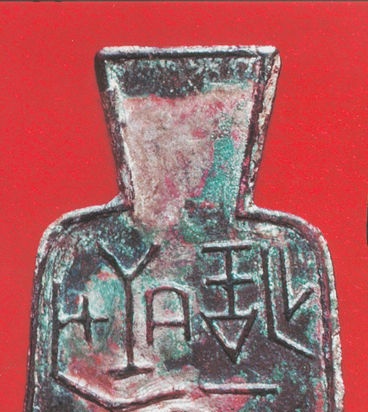The oldest inhabitants of space |
|
True, even before that another dog - Albina, had already risen on rockets several hundred kilometers above the Earth. But Laika had to accomplish a much more important “task”: to experience the whole complex set of factors of a hitherto unexplored long stay in (space zero gravity. The four-legged cosmonaut completed her heroic and dramatic (because she was not destined to return to Earth) mission to the end. Already the first telemetry information received from the satellite confirmed that Laika had well tolerated the takeoff and launch of the rocket into orbit.
So, Laika had the great honor of becoming the discoverer of interplanetary routes. However, long before her remarkable flight, man had populated space with animals. The fantasy of the ancients lifted them up over the Earth. Gaze at the night sky. All of it, as it were, is divided into separate areas, within which star clusters form characteristic figures - constellations, each of which has its own name.
As you can see, the space fauna does not suffer from the poverty of species. The myths of the ancient Greeks colorfully tell how the animals got to heaven. It turns out that one cute habit of the gods was to blame. The gods - of course - did not understand anything about orders, medals and other regalia. When they had an acute desire to distinguish one of the earthly inhabitants, they simply lifted the chosen one to their heavens. In her first, earthly, life, Ursa Major was the queen in Arcadia. She was distinguished by indescribable beauty, which later ruined her. At first, however, there was no sign of trouble. Callisto (that was the name of the queen), as the favorite of the goddess Artemis, entered her retinue and led a carefree and cheerful life. But now the girl liked the supreme ruler of Olympus. The lovers arranged their dates in secret: Zeus was afraid of the scandalous disposition of his wife, the jealous Hera, and Callisto was afraid of the anger of his high patroness.The fact is that Artemis was a convinced virgin and did not even allow men to look at herself. The goddess wanted to see the girls from her environment the same way. When Callisto's relationship with Zeus ceased to be a secret, Artemis became terribly angry and turned the former favorite into a bear. Poor Callisto from now on was doomed to walk on the ground on four legs and to announce the surroundings with a plaintive roar. Zeus showed himself in relation to the beloved by God not without compassion: he lifted Callisto to heaven, from where she has been sparkling with her seven stars ever since.
The constellations Orion and Scorpio are also indicated on the star map. And in front of Orion is the Hare running away from his spear at all blades: the great hunter did not leave his favorite occupation, having moved to heaven. There are many more myths explaining the reasons for the appearance of constellations in the sky. In the battle of Zeus with the giants, the eagle rendered him an invaluable service - it delivered lightning to the thunderer. In gratitude, Zeus placed the eagle in the sky in the form of a constellation. The dolphin, like the Eagle, did not appear in the host of constellations due to transformation: it has always been a dolphin, albeit an outstanding one. When Poseidon asked the elder god Oceanus for the hand of his daughter Amphitrite, there was an unpleasant hitch. The ocean had nothing against it, but Amphitrite was capricious. And it was then that the dolphin volunteered to be Poseidon's matchmaker. Appearing to the bride, he completely captivated her with the description of the magnificent chorus of the sea god: “He lives in a blue palace with a shell roof. At low tide, they open, and then the pearls enclosed in them are visible. Fresh flowers grow on the walls, and fish peep into the amber windows. In the garden, sapphire and red trees bear golden fruits. Algae stretch along the surface of the waves so that the light passing through them sparkles with all the colors of the rainbow. Lost starfish scatter a faint shimmering light among the coral branches. Spiders race quickly on ankle legs, sea lilies grow from the bottom of the sea like small palms with a multi-leaved crown. The vitreous sponges look like small dwarfs with big gray beards, and when a line of glowing cephalopods swims by, blue, red and white sparkling balls fall from above in an amazing play of colors, which fall like a rain of multi-colored stars. When the sea is calm, from the depths (you can see the sun, like an open bowl of a large purple flower ".
A tragic misunderstanding brought Erigon and her dog Meru to the sky. The cheerful god Dionysus had no shortage of epithets associated with either grapes or wine. He was called "grape" and "beautiful grape", "Grape-loving", "many-grained", "bunch-uyurashenny", "winemaker", "wine-bearer", "wine-grower", "wine drinker", finally, "Winemaker"... And all because for a long time this god was a real monopoly of winemaking. But now - for some, obviously, a favor, and maybe just from a generous heart - Dionysus presented the Athenian Ikarios with a vine, which the Greeks did not yet know. Having made the first wine, the good Ikarius treated his friends to the shepherds, who, out of habit, drank beyond measure. When their sober comrades saw the drunks, they immediately decided that the shepherds had been poisoned by the drink of Ikaria, and killed him. Daughter Ikaria Erigone, with the help of a dog, managed to find the body of her father. Unable to bear her grief, she committed suicide over his grave.Dionysus, who served as an indirect cause of the tragedy, rewarded what was supposed to be done in such cases: the constellations Virgo and the Dog shone in the sky.
“What is surprising,” Mom, the god of backbiting and ridicule, indignant at the advice, “if people despise us, seeing such funny and wonderful gods? I'm not even talking about the fact that he (I mean Dionysus) brought here two women: one is his mistress Ariadne, and even her wreath he ranked among the host of stars, the other is the daughter of the peasant Ikaria. And here's the funniest thing, gods: even Erigona's dog - and he brought him here so that the girl would not yearn if her beloved doggie would not be with her in heaven. And this, in your opinion, is not arrogance, not drunken disorder, not mockery? " It is easy to guess that Mom's appeal to Zeus remained without consequences: just like two millennia ago, the constellations Virgo and the Dog shine from the night sky in the radiant company of aliens from Greek mythology. If we consider all 88 constellations by rank, then, of course, the 12 chosen ones should be considered the main ones: Aries, Taurus, Gemini, Cancer, Leo, Virgo, Libra, Scorpio, Sagittarius, Capricorn, Aquarius, Pisces. After all, it is these constellations that are located along the great circle of the celestial sphere, along which the apparent annual movement of the Sun takes place. This circle, or belt, bears the name "zodiac", from the Greek word "Zodion" (animal).
“Aries and Taurus trembled in confusion with fear of Leo and left their places; but the Leo did not move, and the Twins, like two lovers, lay chained to each other, and were motionless; Cancer, angry, with an extended tail, found itself in the claws of the Lion; The maiden was holding grapes in her hands; Libra's chains were messed up and Libra became useless; The scorpion huddled like a bristling snake; The Sagittarius, like an idol, could not wield a bow; Capricorn was not afraid of him; Aquarius fell into the well and stopped pouring out moisture; Fish caught in the net, as if dragged onto land, were suffocating. With such bad omens, the shahinshah saw his wife. May God not send such a fatal combination of constellations to anyone else! " It is impossible without a smile to perceive today the reasoning of medieval astrologers about mystical bonds, allegedly connecting the human character with the visible movement of the zodiacal constellations. The one who was born under the sign of Aries, they argued, is distinguished by exceptional kindness, enterprise and courage; under the sign of Cancer - a tendency to what we call manilovism; Capricorn - patience, intelligence, hard work, etc. In each of the zodiacal constellations, the Sun is on average about a month. That is why even in antiquity, each month had its own zodiac sign: Pisces symbolized February, Aries - March, Taurus - April, Cancer - June, Leo - July, Scorpio - October, Capricorn - December. Signs of the zodiac today serve as decoration of the dials of tower clocks in some places. There are such clocks, for example, in Moscow at the Kazansky railway station, in Leningrad at the Kuznechny market, at the railway station in Sochi.
The North Star is rightfully called the guiding star. The proposal to use it as a reference point for navigation is attributed to the Greek philosopher Thales, who lived six centuries BC. Big Dipper "Guilty" in the fact that the Northern Polar region received the name of the Arctic. There, this bright constellation always stands high above the horizon during the entire six-month night. From the Big Dipper, the name "Arctic" (in Greek "Arktos" - bear).Accordingly, the names and antipodes of the Arctic - Antarctica, as well as the sixth continent of Antarctica, carry a "bear" root. In the same way, the Canis Major constellation became an indirect cause of a curious linguistic incident. The brightest star of this constellation (and of our entire sky), Sirius, was called by the Romans "Vacation" ("Little dog"), following the Greeks, considering her the hunting dog of Orion. "Vacation" first appeared over the horizon in the hottest time of summer for Rome, when because of the scorching heat a break was announced in all serious activities and the rich patricians went to rest in their country villas. Therefore, this summer break itself began to be called "Vacation" or "Vacation days".
Let us return, however, to the zodiacal constellations, which played a large role in the calendar systems of various peoples. The zodiac belt was well known to the priests of Babylon. From them came the zoological names of the constellations that have survived to this day - Scorpio, Cancer, Leo and others. The most important the Babylonians considered the constellation Taurus: after all, without the bull-calf harnessed to the plow, the work of the farmer would be much more difficult. We find a whole zoo on the map of the starry sky compiled in Ancient Egypt: there are animals, fish, and birds. The Egyptians had the constellations Leo, Crocodile, Behemoth, and they called the Big Dipper the Bull's Foot. It is curious that in Russia the Big Dipper was called "Sokhatym" or "Elk"... The Russian traveler Afanasy Nikitin, observing the position of the stars in the sky in India, wrote that "The elk stands with its head at sunrise". One of the ancient Egyptian legends said that the sky itself is in fact a huge cow with stars scattered all over its body, and the sun is a golden calf born of this heavenly cow. Another myth represents the sky as a pig and the stars as pigs. Other religious texts mention the origin of all things from the goose egg; that the sun and the moon are the two eyes of the heavenly falcon; about the sun as a huge ball rolling across the sky by a sun beetle - in the manner of how earthly dung beetles do it with balls of feces ...
In the archaic mythology of Ancient Greece, the Moon was identified with a cow, and the Sun with a bull. And among the ancient tribes that inhabited Transbaikalia and Northern Mongolia in the 1st millennium BC, the beneficent sun deity, depicted in the form of a deer with golden horns, was the subject of religious worship. For the ancient Ainu, the main deity was the sun serpent. The religion of South Arabia in the pre-Muslim period represented the moon god Almakaka in the form of a mountain goat. A curious legend is associated with the constellation Orion, the echoes of which are contained in one of the Altai folk tales. It tells how an old hunter named Kudai-bergen for seven months stubbornly pursued three red deer, until he drove them into the sky. The hunter with the dogs also followed them there. His first arrow missed the target, the second pierced all three deer, but the animals continued their run as if nothing had happened. “On a summer night, on the eastern edge of the sky, this chase is clearly visible: three maral whales, three dogs, two arrows - one white, the other, covered in blood, red, and behind the old man the hunter Kudai-bergen. And so they move across the sky, not knowing rest, with one immortal, inseparable constellation of the Three Marals ". Krasnopevtsev V.P. - Seagulls on a pedestal Similar publications |
| Where the eagle tore the snake ... | Hamadrills: sounds, facial expressions, gestures |
|---|
New recipes
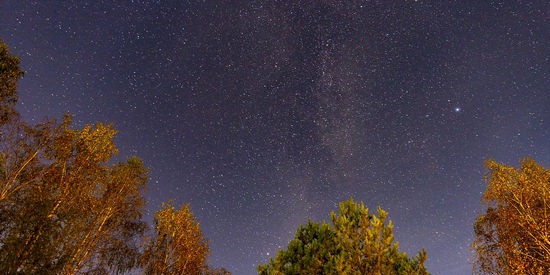 Well, I know that on November 3, 1957, an event took place, the significance of which for science and the general progress of mankind cannot be overestimated. The second Soviet artificial satellite of the Earth carried an earthly living being into orbit. The first space passenger in history was Laika the dog, whose pretty face later appeared on the pages of almost all newspapers and magazines in the world.
Well, I know that on November 3, 1957, an event took place, the significance of which for science and the general progress of mankind cannot be overestimated. The second Soviet artificial satellite of the Earth carried an earthly living being into orbit. The first space passenger in history was Laika the dog, whose pretty face later appeared on the pages of almost all newspapers and magazines in the world. After her, many dogs, as well as monkeys, birds, mollusks, insects and other living organisms, visited space. Passengers of the Soviet "Zonda-5"for example, there were two turtles and a fruit fly. Space experiments with animals prepared the flights of the first cosmonauts and are still serving to develop a new science — space medicine.
After her, many dogs, as well as monkeys, birds, mollusks, insects and other living organisms, visited space. Passengers of the Soviet "Zonda-5"for example, there were two turtles and a fruit fly. Space experiments with animals prepared the flights of the first cosmonauts and are still serving to develop a new science — space medicine. Among the astronomical toponyms (the toponym is the name of the area) there are many names of animals. Here Lesser and Ursa Major, Snake, Lesser Horse, Aries, Taurus, Leo and Lesser Leo, Chanterelle, Lizard, Lynx, Hounds, Ursa Major and Ursa Minor, Giraffe, Chameleon, Wolf, Scorpio, Capricorn, Hare. Among aquatic animals are Whale, Hydra, Dolphin, Fish in general and Southern Fish, Goldfish, Flying Fish, as well as Southern Hydra, Cancer. A non-poor and heavenly aviary: Eagle, Swan, Raven, Dove, Toucan, Peacock, Bird of Paradise, Crane. One of the constellations is even named after an annoying and persecuted insect, about which the ancient philosopher and writer Lucian responded as follows: “Free, unbound, the fly reaps the work of others, and tables are always full for her. For the goats are milked for her, and the bees work for her no less than for a man, “and the cooks sweeten her spices for her. She tastes them before the kings, and then, walking on the tables, the fly treats itself with them and eats from all the dishes. "
Among the astronomical toponyms (the toponym is the name of the area) there are many names of animals. Here Lesser and Ursa Major, Snake, Lesser Horse, Aries, Taurus, Leo and Lesser Leo, Chanterelle, Lizard, Lynx, Hounds, Ursa Major and Ursa Minor, Giraffe, Chameleon, Wolf, Scorpio, Capricorn, Hare. Among aquatic animals are Whale, Hydra, Dolphin, Fish in general and Southern Fish, Goldfish, Flying Fish, as well as Southern Hydra, Cancer. A non-poor and heavenly aviary: Eagle, Swan, Raven, Dove, Toucan, Peacock, Bird of Paradise, Crane. One of the constellations is even named after an annoying and persecuted insect, about which the ancient philosopher and writer Lucian responded as follows: “Free, unbound, the fly reaps the work of others, and tables are always full for her. For the goats are milked for her, and the bees work for her no less than for a man, “and the cooks sweeten her spices for her. She tastes them before the kings, and then, walking on the tables, the fly treats itself with them and eats from all the dishes. "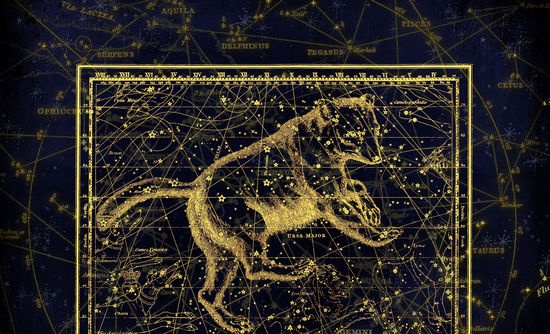 Oh, this Artemis! Once she herself had a chance to experience a previously unknown sweet languor in her chest — when she met the handsome hunter Orion. The virgin goddess was close to giving up her old beliefs and giving the young man her heart. But ... an evil scorpion caused the untimely death of her chosen one.
Oh, this Artemis! Once she herself had a chance to experience a previously unknown sweet languor in her chest — when she met the handsome hunter Orion. The virgin goddess was close to giving up her old beliefs and giving the young man her heart. But ... an evil scorpion caused the untimely death of her chosen one. Dolphin matchmaking was a success. At first, the nymph hesitated thought, then for a long time asked the matchmaker about everything, and after a few days she finally accepted Poseidon's proposal. The troubles of the dexterous dolphin were not left without a reward - a new constellation lit up over the earth.
Dolphin matchmaking was a success. At first, the nymph hesitated thought, then for a long time asked the matchmaker about everything, and after a few days she finally accepted Poseidon's proposal. The troubles of the dexterous dolphin were not left without a reward - a new constellation lit up over the earth.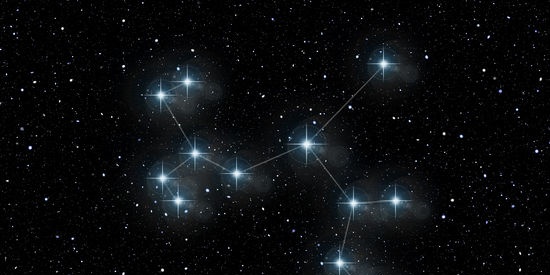 This Dog, according to the author of the dialogue "Council of the Gods" satirist Lucian, who lived in the 2nd century AD, was especially unpleasant to the most conservative inhabitants of Olympus.
This Dog, according to the author of the dialogue "Council of the Gods" satirist Lucian, who lived in the 2nd century AD, was especially unpleasant to the most conservative inhabitants of Olympus. In the Middle Ages Fortune tellers - astrologers skillfully used the symbolic names of the constellations of the zodiac, creating truly impressive pictures, similar to the one we took from the novel "Visramiani":
In the Middle Ages Fortune tellers - astrologers skillfully used the symbolic names of the constellations of the zodiac, creating truly impressive pictures, similar to the one we took from the novel "Visramiani":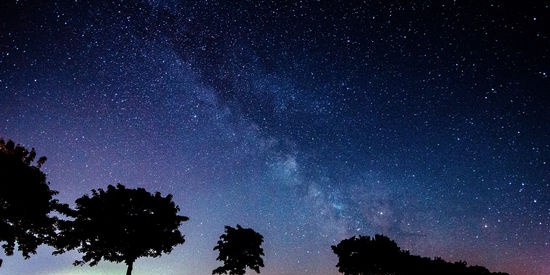 Among the most important are the constellations Ursa Minor and Ursa Major. The last star of the Ursa Minor's tail is the famous Polaris, and the Ursa Major makes circles around it.
Among the most important are the constellations Ursa Minor and Ursa Major. The last star of the Ursa Minor's tail is the famous Polaris, and the Ursa Major makes circles around it.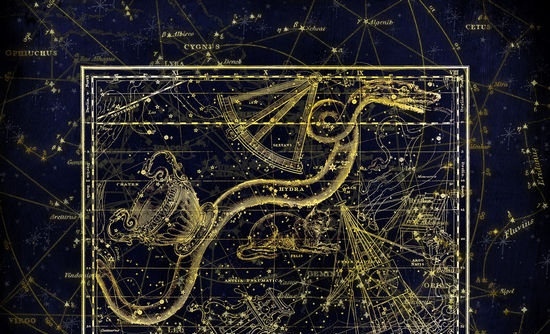 This word came to the Russian language through the Polish language and took the plural form. Curiously, the corresponding terms in German (Hundstag) and English ("Dogday") languages literally translate as "Dog days".
This word came to the Russian language through the Polish language and took the plural form. Curiously, the corresponding terms in German (Hundstag) and English ("Dogday") languages literally translate as "Dog days".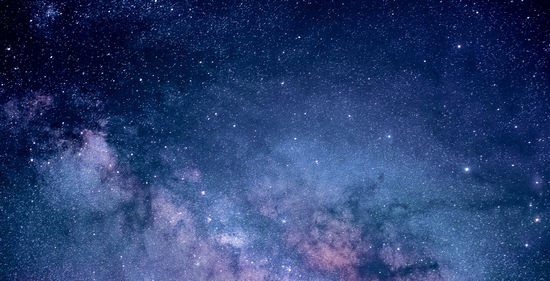 The ancient myths of Karelia tell about a duck swimming in the middle of the sea, from whose egg the earth arose.
The ancient myths of Karelia tell about a duck swimming in the middle of the sea, from whose egg the earth arose.